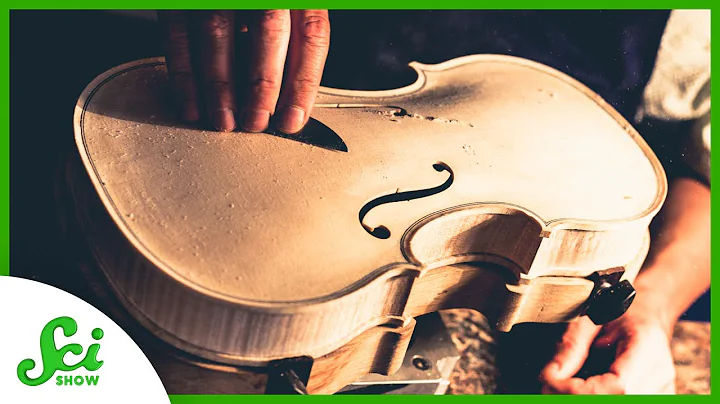Effective Strategies for Rehabilitating Popliteus Injuries
Table of Contents:
- Introduction
- Understanding the Popliteus Muscle
- Causes of Popliteus Injuries
- Symptoms of Popliteus Injuries
- Rehabilitation Exercises for Popliteus Injuries
5.1 Reverse Heel Tap
5.2 Single Leg Deadlift with Lateral Band
5.3 Squats with Resistance Band
5.4 Arch Lifts for Tibialis Posterior Tendinopathy
- Additional Strengthening Exercises
- Importance of Proper Foot Control
- The Role of Hip Strength in Preventing Popliteus Injuries
- Managing Pain and Fatigue Levels
- Returning to Sprinting and Sports
- Conclusion
Understanding and Rehabilitating Popliteus Injuries
The popliteus muscle, located at the back of the knee joint, is a crucial stabilizer for sprinters and athletes who rely on explosive leg movements. However, injuries to this muscle can be debilitating, causing pain and impacting performance. In this article, we will delve into the causes, symptoms, and rehabilitation exercises for popliteus injuries, providing a comprehensive guide to help individuals recover and prevent further damage. So, if you or someone you know is struggling with a popliteus injury, read on to discover effective strategies to regain strength, stability, and return to sport.
Introduction
Popliteus injuries, although rare, can occur due to overloading and instability in the hip region. The popliteus muscle is responsible for internal rotation of the tibia during the swing phase of sprinting. When the foot is planted, it assists in stabilizing and unlocking the knee joint. However, weaknesses in the hip control and foot pronation can lead to excessive inward rolling of the knee, straining the popliteus tendon. This can result in sharp pain at the back of the knee, making activities like sprinting and walking downhill challenging.
Understanding the Popliteus Muscle
Located on the backside of the knee joint, the popliteus muscle plays a vital role in maintaining knee stability and preventing injury. It originates from the tibia and attaches to the femur, forming a diagonal connection. This small muscle exerts internal rotation on the tibia during the swing phase of sprinting, helping to rotate the foot inward. Additionally, it pulls the femur outward when the foot is planted, contributing to knee stabilization. Despite its size, an injured popliteus can significantly impact an athlete's performance, especially in sprinting.
Causes of Popliteus Injuries
Popliteus injuries often occur due to a combination of factors, including overload and instability. Sprinters, in particular, are at a higher risk due to the repetitive nature of their sport. The primary causes of popliteus injuries lie in foot control, hypermobility, and hip strength. When the foot rolls excessively inward or pronates during running, it places stress on the popliteus tendon. Additionally, weaknesses in hip control and inadequate hip strength can lead to instability, causing the knee to excessively roll inward. Understanding these causes is crucial for effective rehabilitation and prevention strategies.
Symptoms of Popliteus Injuries
Identifying the symptoms of a popliteus injury is vital for early diagnosis and prompt treatment. Individuals with popliteus injuries often experience pain at the back of the knee, particularly around the femoral attachment. The pain may feel similar to a posterior hamstring strain, accompanied by a sensation of crunching. It is essential to differentiate between a popliteus injury and other conditions, such as ITB syndrome or meniscus tears. Popliteus injuries are more common in younger athletes, and prompt assessment by a healthcare professional is recommended.
Rehabilitation Exercises for Popliteus Injuries
Effective rehabilitation following a popliteus injury involves specific exercises that target the affected muscle and the surrounding hip and foot muscles. These exercises aim to strengthen the popliteus, improve hip stability, and enhance foot control to prevent future injuries. It is crucial to start with exercises that isolate the popliteus and gradually progress to comprehensive strengthening and stabilization exercises. Here are a few exercises that can aid in the recovery process:
5.1 Reverse Heel Tap
The reverse heel tap exercise specifically targets the popliteus muscle, helping to strengthen its function. To perform this exercise, wrap a resistance band around the forefoot and hold onto a stable object for support. Begin by bending the knee and rotating the tibia internally, raising the foot upwards. Focus on maintaining tension on the band and controlling the movement. Perform 10 to 12 reps on each leg for three sets. It is essential to avoid overexertion and monitor fatigue levels during the exercise.
5.2 Single Leg Deadlift with Lateral Band
A single leg deadlift with a lateral band is an effective exercise for improving knee and hip stability. By standing on one leg and using a lateral resistance band, the glutes and hip rotators are activated, aiding in knee control. Focus on keeping the knee aligned over the foot and maintaining tension on the band throughout the exercise. Start with minimal weight and gradually increase as strength improves. Perform 8 to 12 repetitions for three sets on each leg.
5.3 Squats with Resistance Band
Squats with a resistance band placed just above the knees target the glute muscles and promote external rotation strength. Stand on one leg, maintaining tension on the band while squatting down. Concentrate on keeping the knees together and the pelvis level. This exercise helps develop stability and control of the knee joint and prevents inward rolling. Perform a minimum of 8 reps, gradually increasing the number of repetitions and sets as strength improves.
5.4 Arch Lifts for Tibialis Posterior Tendinopathy
Individuals with tibialis posterior tendinopathy can benefit from arch lifts exercises. This exercise focuses on strengthening the tibialis posterior tendon, which supports the foot arch. Stand on one leg with the foot partly off the edge of a box. Begin by lifting the arch of the foot, which helps roll the knee into a neutral position. Slowly lower the arch down and allow the knee to roll inward. Aim for at least 8 reps per set and progress as tolerated.
These rehabilitation exercises, when performed regularly, can help strengthen the popliteus muscle, improve hip stability, and prevent further injuries. It is important to note that every individual's recovery process may vary, and consulting with a healthcare professional or physical therapist is recommended for personalized guidance.
Additional Strengthening Exercises
While the focus of popliteus injury rehabilitation mainly lies in strengthening the affected muscles, it remains essential to address other muscle groups and components that contribute to overall lower limb stability. Incorporating exercises such as single-leg squats, hip thrusts, and hamstring work can provide additional strength and stability to support the recovery process. Optimal recovery requires a holistic approach that targets all contributing factors to prevent future injury.
Importance of Proper Foot Control
Proper foot control plays a pivotal role in avoiding popliteus injuries and maintaining overall lower limb stability. Individuals with foot pronation issues or previous ankle sprains are at a higher risk of developing injuries in the knee area. Addressing foot control through exercises that promote arch support and tibialis posterior tendon strength can significantly reduce the chances of knee instability and subsequent popliteus injuries.
The Role of Hip Strength in Preventing Popliteus Injuries
Hip strength is crucial in preventing popliteus injuries as it helps stabilize the knee joint. Weaknesses in hip control and gluteal muscles can lead to compensatory movements and overreliance on the popliteus muscle, causing excessive strain. Incorporating exercises that target hip abduction, external rotation, and gluteal activation can contribute to preventing future injuries and enhancing overall lower limb stability.
Managing Pain and Fatigue Levels
When rehabilitating from a popliteus injury, it is essential to manage pain and monitor fatigue levels carefully. Pushing too hard or overexerting the affected muscle can hinder the recovery process and potentially lead to further damage. Individuals should aim for pain-free or mildly uncomfortable exercises and gradually progress based on their tolerance. Adhering to appropriate rest periods and ensuring adequate recovery between workout sessions allows the body to heal and adapt effectively.
Returning to Sprinting and Sports
Returning to sprinting and sports after a popliteus injury requires a systematic approach. Once an individual has successfully rehabbed the injured muscle and achieved pain-free movement and strength, they can gradually reintroduce sprinting activities. It is crucial to start with low-intensity runs and gradually increase speed and distance. Monitoring the body's response and seeking guidance from a healthcare professional or coach is imperative to avoid setbacks and ensure a safe return to sport.
Conclusion
Popliteus injuries can be debilitating for athletes, particularly sprinters, but with appropriate rehabilitation exercises and a holistic approach, recovery is possible. Understanding the causes, symptoms, and effective rehabilitation strategies is essential for preventing future injuries and enhancing overall lower limb stability. By prioritizing foot control, hip strength, and proper technique during exercise, individuals can regain strength, stability, and confidently return to sprinting and sports.
*Note: The content provided in this article is for informational purposes only and should not be considered as medical advice. It is always recommended to consult with a healthcare professional or physical therapist for proper diagnosis and guidance on injury rehabilitation.







